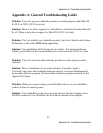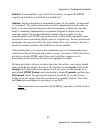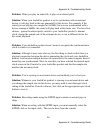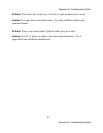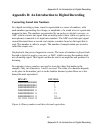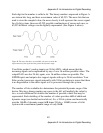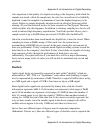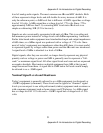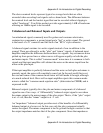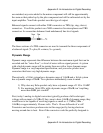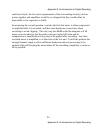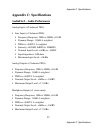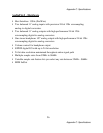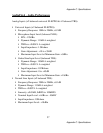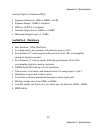Appendix B: An Introduction to Digital Recording
51
Appendix B: An Introduction to Digital Recording
level of analog audio signals. The most common are dBu and dBV decibels. Both
of these represent voltage levels and still double for every increase of 6dB. It is
only the reference point, or 0dB level that is different. A 0dBV signal has a voltage
level of 1.0 volts. A 0dBu signal has a voltage level of .775 volts. Since .775 is
approximately 2dB less than 1.0, converting dBV levels into dBu levels is as
simple as subtracting 2dB (2.21 to be exact).
Signals are also occasionally represented with units of dBm. This is an older unit
that measures power instead of voltage levels with 0dBm representing 1 milliwatt.
Earlier tube-based audio equipment used standardized input and output impedances
of 600 ohms, so a 0dBm signal was produced with a voltage of .775 volts. Since
most of today’s equipment uses impedances other than 600 ohms, it is more useful
to represent signals by voltages rather than power and the dBu unit was introduced.
A signal level of 0dBu is identical to a level of 0dBm.
Digital signals, after they are recorded, no longer directly represent any physical
quantity such as voltage or power and 0dB is generally used to represent a “full-
scale” or maximum signal level. All other signal levels are lower and are expressed
as negative decibels. Most meters on digital equipment have 0dB at the top and
range downward from there. A signal that is 30dB below full scale would simply
be referred to as a –30dB signal.
Nominal Signal Levels and Headroom
Today’s equipment is generally referred to as +4dBu equipment (professional) or
–10dBV equipment (consumer). These levels are the typical or “nominal” signal
levels you can expect to see with professional (studio) equipment such as mixers or
with consumer equipment such as home stereos and CD players. A +4dBu signal
has a voltage level of 1.23 volts and a –10dBV signal has a voltage level of .316
volts.




